The Oder
The Oder is the second longest river in Poland after the Vistula River, and a border river between Poland and Germany. It also flows through the Czech Republic. 742 kilometres of 854.3 kilometres of its total length km flows through Poland. There are 28 cities on the Oder River, and seven national parks are in its basin.
In the summer of 2022, we witnessed an Oder environmental disaster, during which an estimated 200-400 tons of fish and mussels were killed (25-50% of the total fish and mussel population).
This interactive story shows both the scale of this disaster and the system of river barriers built by people, including barrages, weirs, water thresholds, dams and locks.
It is one of the most significant manifestations of human interference in nature.
Jakub Górnicki
Numbers
Types of river structures

a type of hydrotechnical structure erected across a river or canal. It keeps water to maintain a constant level. These are insurmountable obstacles, and that is why there are locks enabling navigation and fish passes built parallel to the weirs. There are 28 weirs in the Oder main stream.
a hydrotechnical structure erected on navigable canals and rivers (often at weirs) to enable waterway navigation between sections with different water levels. There are 43 locks located on the Oder river.
a reinforced section of a watercourse built to stabilise the bottom and prevent erosion. Most ramps are underwater elements that do not block the water flow but only affect the river bottom and the shore.
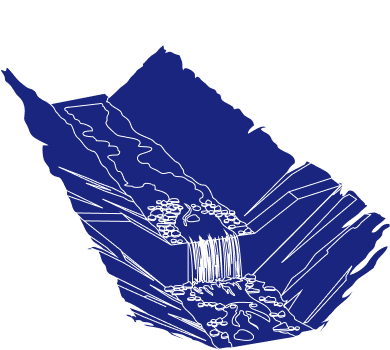
a building structure on a river consisting of a water damming structure with outlets used for damming and retaining water.
a complex of interconnected water structures. Its central part is a damming structure, which can also function as a discharge structure (weir). Barrages are built to improve the river's navigability. They usually consist of a weir, a hydroelectric power plant, a fish ladder and a lock.
a hydrotechnical structure that dams up water. It is a barrier dividing the river valley, damming water for flood protection or creating a reservoir. The difference in water levels before and after the dam is often used in hydroelectric power plants to generate electricity.
a hydrotechnical structure created for regulatory purposes. It is used to create and consolidate a new river bank. The basic types of these dams are longitudinal dams (built in the regulation line of the designed shore) and transverse dams (regulation spurs).



The Oder
regulation
Kurów
A lock connects Przecznica with the West Oder between Wieliszew and Szczecin. It does not function.
Dolnosiadelska
It is a lock connecting the Oder River with Żeglicki Przekop in the Kurowskie Błota Nature Reserve. It does not function.
Gryfino
It is the Gryfino economic lock in the West Pomeranian Voivodeship. A network of natural and artificial canals was created between the West Oder and the East Oder, separated from both rivers by embankments and locks. Currently, it exists partially but does not function.
East Oder
A lock on the east branch of the Oder (Regalica) is part of the shipping route between the East and West Oder through Międzyodrze. It is closed and does not work.
West Oder
It is a lock on the West Oder, part of the shipping route between the East Oder and the West Oder (via Międzyodrze) between Gartz and Gryfino. It is closed and does not work.
Widuchowa
That weir was built in 1914 in Widuchowa in the West Pomeranian Voivodeship. It connects the Western Odra with the Eastern Odra (Regalica) and crosses the river along its entire width. The weir is 78 m long.
Malczyce
The Malczyce barrage is located on 300.4 km of the Oder River waterway in the village of Rzeczyca in the Środa Śląska parish. It is the youngest and lowest barrage of the Oder River waterway. It consists of a weir, a lock and a hydroelectric power plant.
Brzeg Dolny
The barrage in Brzeg Dolny is located approximately 5 km upstream from the town of Brzeg Dolny, near the village of Wały. Its main facilities are a gate-and-flap weir with a flyover, a train lock on the shipping canal and the "Wały" Hydroelectric Power Plant. The facility is located in a bend of the Oder River, so the hydroelectric power plant and one span of the weir (the fifth) are located in the main Oder River bed. The remaining four spans of the weir were built on the left flood terrace.
Rędzin
The Rędzin barrage is located at 260-261 km of the Oder River waterway in Wrocław. The complex includes a weir, two locks (Rędzin I and Rędzin II), road bridges, an administration building, a housing estate and warehouses.
Różanka
The Różanka barrage is located in Wrocław, on the Main Waterway leading through the city as part of the Oder River waterway, at its 253 km. It is located on the regulated and rebuilt branch of the Oder River called the Old Oder and on the Różanka Canal. It includes a weir and a lock located on the Różanka Canal.
Zacisze
The Zacisze barrage is located at 249.3 km of the Oder River waterway in Wrocław. It consists of a weir and a lock. They are located unusually – on two different canals and work independently of each other. Currently, only the lock works.
Wrocław
Piaskowy barrage is located in Wrocław, in the Municipal Upper Hydrotechnical System, on the downtown branch of the Oder River. It includes facilities like Saint Matthias weir, Piaskowa Lock, Maria Mill, and St. Clara weir. The oldest preserved hydrotechnical structures in Wrocław are located within this barrage.
Wrocław
A barrage located within Wrocław, in the Municipal Lower Hydrotechnical System. It consists of the Wrocław I Hydroelectric Power Plant, the power plant's weir, the Mieszczański Lock, the Wrocław II Hydroelectric Power Plant and the weir of the second power plant.
Psie Pole
The Psie Pole barrage is located in Wrocław, on a side branch of the Oder River waterway and a lateral canal, i.e. the Old Oder River and the Municipal Canal. The most important objects within it are the weir, the city lock and the floodgate. It was built in the years 1892–1897.
Szczytniki
The Szczytniki barrage is located on a side branch of the Oder River waterway, the so-called Municipal Waterway, and on the route leading to the Midtown Hydrotechnical System within Wrocław. It includes a weir and a lock.
Opatowice
The Opatowice barrage is located on a side branch of the Oder River waterway, the so-called Municipal Waterway, and on the route leading to the Midtown Hydrotechnical System within Wrocław city, at 245.35 km of the river. There is a weir and a lock within it.
Bartoszowice
It is a barrage in Wrocław on 244.8 km of the Oder River waterway. The essential elements of it are the Bartoszowice weir and lock created as part of the so-called second Odra canalisation, which took place in 1913–1917.
Janowice
The Janowice barrage is located on 233 km of the Oder River waterway in the village of Jeszkowice in Wrocław County. It was built from 1912–1916. It consists of a weir, two water locks and the Janowice Hydroelectric Power Plant.
Ratowice
The Ratowice barrage is located in the Czernica commune in Wrocław County at 227.4 km of the river. It consists of a chamber lock and a three-span flap weir. It was built in 1910–1911.
Oława
The Oława barrage is located on 214.6 km of the Oder River waterway in the Oława Hydrotechnical System. The barrage includes the following structures: Oława weir, Oława I lock, Oława II lock, Oława II Hydroelectric Power Plant, as well as auxiliary and supplementary buildings and structures. The barrage is located on the canalised section of the Oder River.
Lipki
The Lipki barrage is located at 206.7 km of the Oder River waterway. It consists of a flap weir and, uniquely, a single lock.
Brzeg
The Brzeg barrage is located on 197.6 km of the Oder River waterway in Brzeg county in the town of Brzeg. It consists of three permanent weirs (including one inoperable) and a large and a small lock.
Zwanowice
The Zwanowice barrage is located at 185.1 km of the Oder River Waterway. It consists of a weir and two locks (old and new), but there is no small lock). There are additional gates in the new lock chamber, allowing the locking of smaller units (it is probably the only such lock in Poland). A run-of-the-river Hydroelectric power plant, "Kopin", was built in 1924. The barrage was built in 1907–1918 during the second stage of the Oder River canalisation.
The Eastern Neisse influx
The Eastern Neisse influx barrage is located on 180.3 km of the Oder River waterway in Rybna near Brzeg in Opole County. It was built between 1892 and 1896. It includes a weir and two locks and is operated manually. Nearby, there are Oder oak-hornbeam forests covered by the strict Natura 2000 protection program.
Zawada
The Zawada barrage is the twelfth barrage on the canalised Oder River. It is located at km 174.8 of the Oder River waterway near Golczowice. It consists of a weir and two locks – a large one and a small one. There is also a run-of-the-river hydroelectric power plant with a capacity of 1.4 MW.
Chróścice
The Chróścice barrage is located on 169.2 km of the Oder River waterway in the Opole Voivodeship, near the town of Chróścice. It consists of a weir, a large lock and a small lock.
Dobrzeń
The Dobrzeń barrage is located at 164.0 km of the Odra River waterway. It consists of a flap weir and small and large locks on separate canals. There is also a 1.6 MW run-of-the-river hydroelectric power plant on site.
Wróblin
The Wróblin barrage is located at 157.4 km of the Oder River waterway near the Opole district of Wróblin. It consists of a weir and two locks, a large one and a small one.
Opole
The Opole barrage on the 150.3 km Oder River waterway consists of a sector weir with three spans and two locks (small and large ones). The barrage was built at the end of the 19th century as part of a project to regulate the Oder and create the Oder River waterway.
Groszowice
The Groszowice barrage is located on 144.5 km of the Oder River waterway, near the Opole district of Groszowice. It consists of a weir, a large lock and a small lock.
Kąty
The Kąty barrage is located in Kąty Opolskie on 137.3 km of the Oder River waterway. It includes two navigation locks (large and small ones) and a weir. The first original weir was built there in 1891.
Rogów
The Rogów barrage is located on 129.5 km of the Oder River Waterway near the town of Rogów Opolski. It consists of a weir, a large lock and a small lock.
Krapkowice
The Krapkowice barrage is located on 122.8 km of the Odra River waterway. It consists of a weir and small and large locks on separate canals. There is also a run-of-the-river hydroelectric power plant on site.
Krępna
The Krępna barrage is located at 114.4 km of the Oder River waterway near the town of Krępna. It consists of a weir, a large lock and a small lock.
Januszkowice
The Januszkowice barrage is located at 105.5 km of the Oder River waterway. It includes two navigation locks, a three-span weir and other facilities, including the Januszkowice Hydroelectric Power Plant. The first buildings were built at the turn of the 19th and 20th centuries.
Koźle / Koźle 2
The Koźle barrage, located in Kędzierzyn-Koźle, was built in 1895. It consists of a small lock and a weir. There is a 2.53 m water fall on the barrage. The step is located at 95.3 km of the river.
Łabędy
The Łabędy lock is located at 38.5 km of the Gliwice Canal. Its name comes from Łabędy, a district of Gliwice, allowing to overcome a 4.20 m difference in water levels on the canal.
Dzierżno
The Dzierżno lock in Pyskowice on the Gliwice Canal allows it to overcome a 10.2 m water level difference, which gives it fourth place on the list of the highest locks in Poland. The facility is described as a shaft lock.
Rudziniec
The Rudziniec lock is located at 21.5 km of the Gliwice Canal on a dam with a 6.25 m difference between upper and lower water levels. It was built near the former "Piela" Steelworks in Rudziniec.
Sławęcice
The Sławięcice lock on the Gliwice Canal was built in 1935–1938. It is adapted for saving locking through a channel connecting both chambers, which is closed with a bolt. The difference in water levels is 6.25 m.
Nowa Wieś
The Nowa Wieś Lock in Kędzierzyn-Koźle is the second lock on the Gliwice Canal, located at 7.6 km of the canal. Like all locks on the Gliwice Canal, it has a two-chamber, twin structure, allowing it to overcome a 6.2 m difference in water levels on the canal.
Kłodnica
The Kłodnica Lock is the first and the largest lock of all locks located on the Gliwice Canal, allowing it to overcome the 10.3 m difference in water levels on the canal. Its name comes from the name of the current district of Kędzierzyn-Koźle.



The Oder
of Oder disaster
July 26th
Official information about the Oder environmental disaster was released on July 26, 2022, and concerned the area of the Lipki weir on the border of the Opole Voivodeship and Lower Silesian Voivodeship. However, the village administrator of Lipki, Zdzisław Uryga, claims that the first dead fish were observed in that area over two weeks earlier, on July 7.
July 27th
Two men who were sailing in a boat along the Oder river bed inform the barrage inspection head in Oława about dead fish in the river. On the same day, the Inspectorate of Environmental Protection receives District information about a mass mortality involving fish.
July 28th
The Wrocław Provincial Environment Inspectorate collects water samples from three places between the Lipki lock and Oława. Observing the high oxygenation of the water, inspectors initially claim that a strongly oxidising substance was released into the Oder River. Ultimately, however, they verified there was no lack of oxygen in the water and no dead fish.
July 29th
Residents of Oława report that dead fish are visible in the Oder River riverbed in Oława. According to the Fishing Club No. 6 from Jelcz-Laskowice, these fish have been flowing from Silesia, around the Gliwice Canal, for three days.
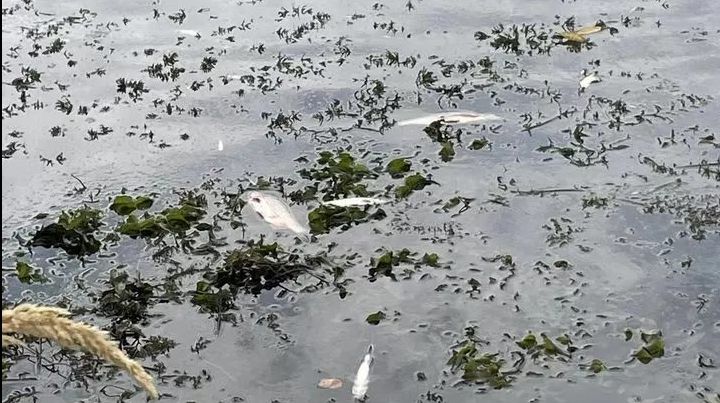
July 30th
Dead fish move downstream. In Oława, the scale of the disaster and the vast number of dead animals are visible. The problem increases. The Oława branch of the Polish Fishing Association issues a statement and announces an action to catch fish from the upper and lower Oder canals in Oława for the next day.
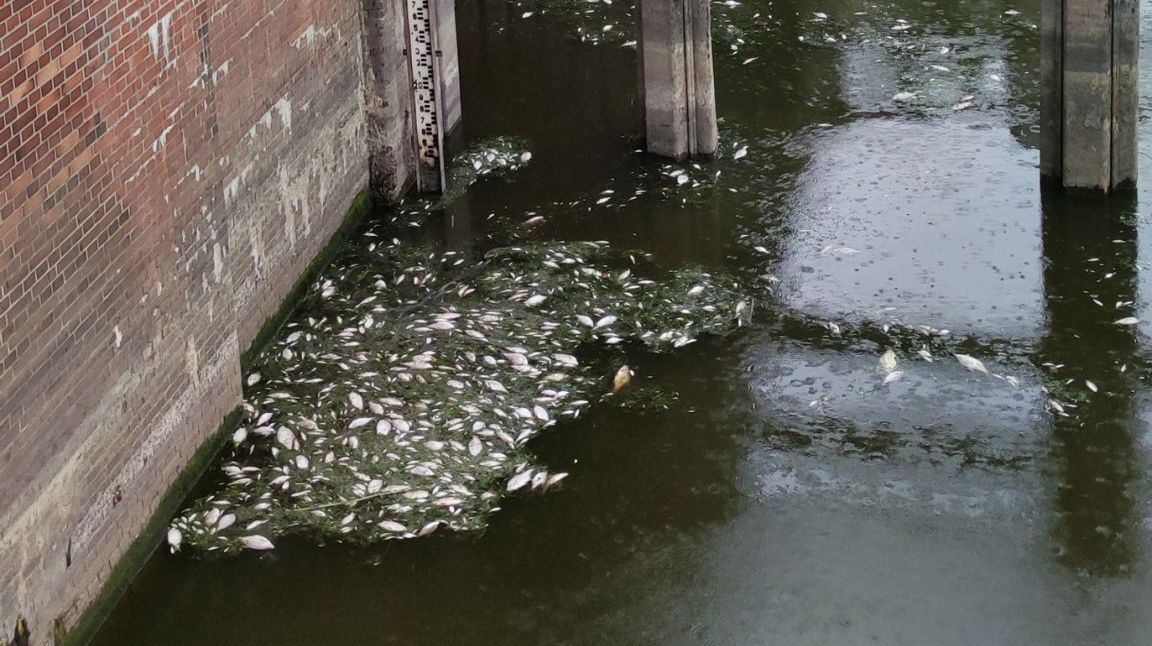
July 31st
Almost eight tons of dead fish were fished out of the river in Oława. The action was mainly attended by anglers and city residents who wanted to save their river. The action was coordinated by the Wrocław district of the Polish Fishing Association president, Andrzej Świętach, who estimated that the fish population would be unable to rebuild for a decade. Dead bream, zander, roach, metre-long pike, catfish and other fish were caught from the river.
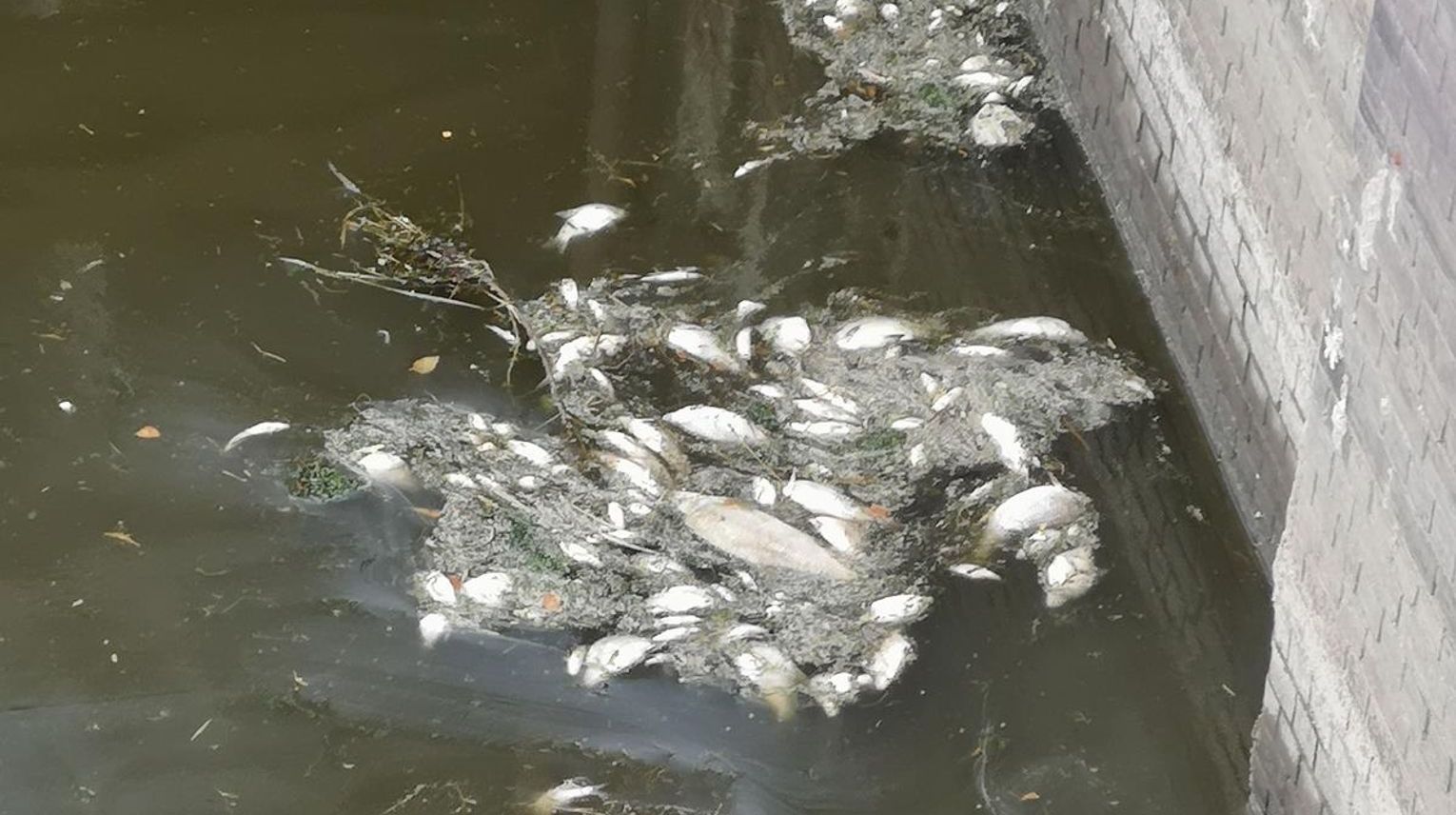
August 1st
The mayor of Oława, Tomasz Frischmann, informs the voivode of Lower Silesia, Jarosław Obremski, about the death of fish and pollution of the river. Only then does the Wrocław Provincial Environment Inspectorate confirm the presence of mesitylene in the lock.
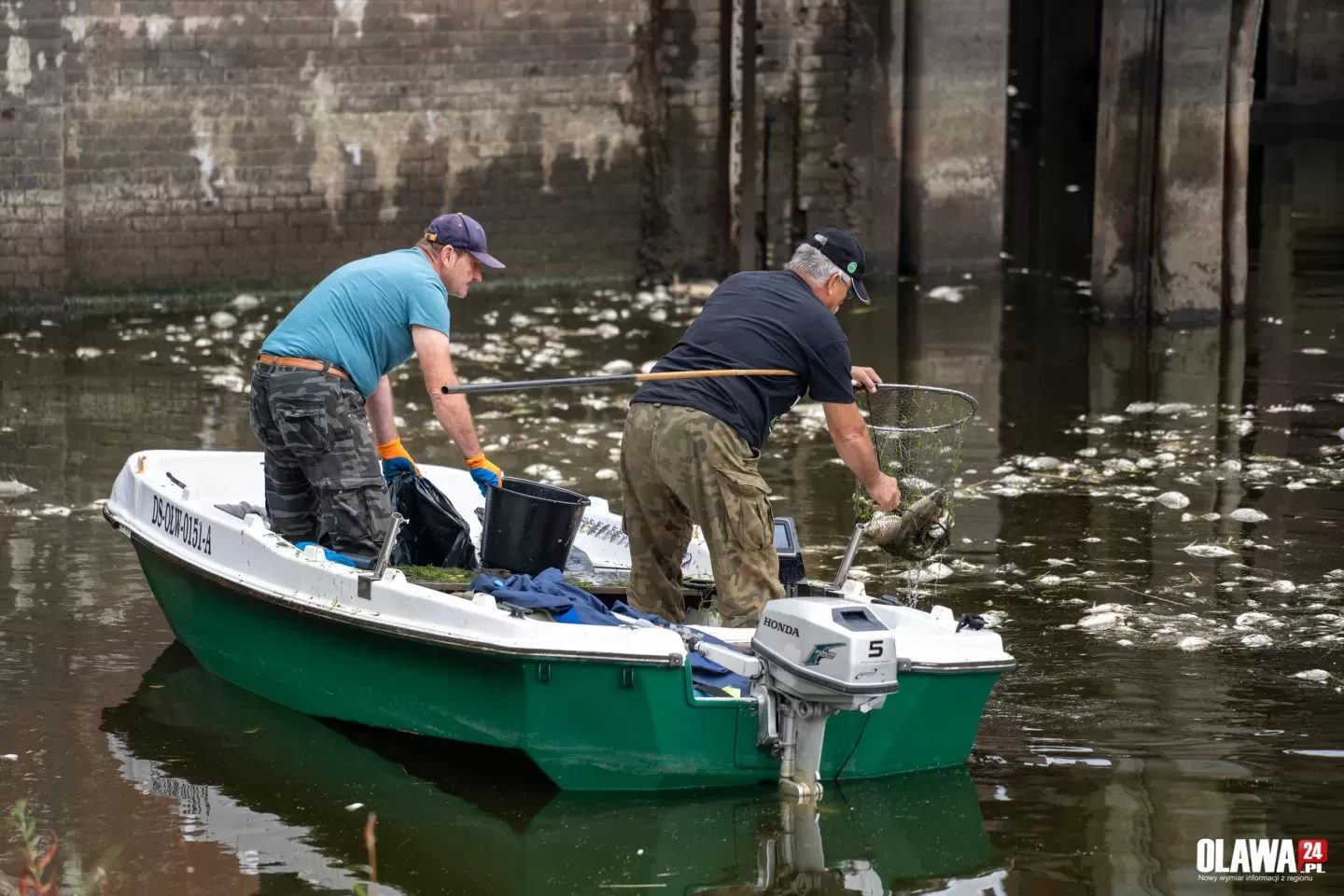
August 3rd
MP from the Civic Coalition, Małgorzata Tracz, files an intervention and interpellation regarding the Oder River pollution, and the mayor of Oława, Tomasz Frischmann, notifies the District Prosecutor's Office in Oława regarding the Oder River contamination. In turn, the Lower Silesian Provincial Environment Inspectorate spokeswoman informs that there are no reports of large amounts of dead fish in the vicinity of Wrocław. The president of the Lower Silesian WOPR confirms these words.
August 5th
Water samples were taken at four points on the Odra River, where an increased presence of oxygen was found, but no anomalies in water chemistry were detected. However, near Głogów, dozens of dead fish flow along the Oder River. Dead fish wash up on the shore. Due to water contamination near Kleń, fishing competitions on the Oder River are cancelled.
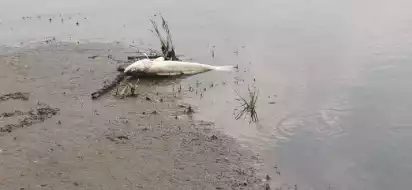
August 8th
More samples were taken to check the water level in the river. A high oxygen content was found in the water at the sampling point in Widuchowa. The first reports of dead fish have appeared in the Lubusz Voivodeship.
August 9th
Thousands of dead fish appear in the Oder River in Nowa Sól and Krosno Odrzańskie (Lubusz Voivodeship). Residents report that the water is murky and smelly. Cigacice (Lubusz Voivodeship) and Wrocław also noticed the first dead fish.
August 10th
On that day, the largest national media report about the disaster on the Oder River. The dead fish reach Western Pomerania. The Voivode of Lubusz, Władysław Dajczak, informs that no excessive amounts of toxins have been detected in the Lubusz part of the Oder River. According to the Provincial Environment Inspectorate in Katowice, no pollution was found in the Gliwice Canal. The Regional Water Management Board in Wrocław appeals to residents not to enter the river.
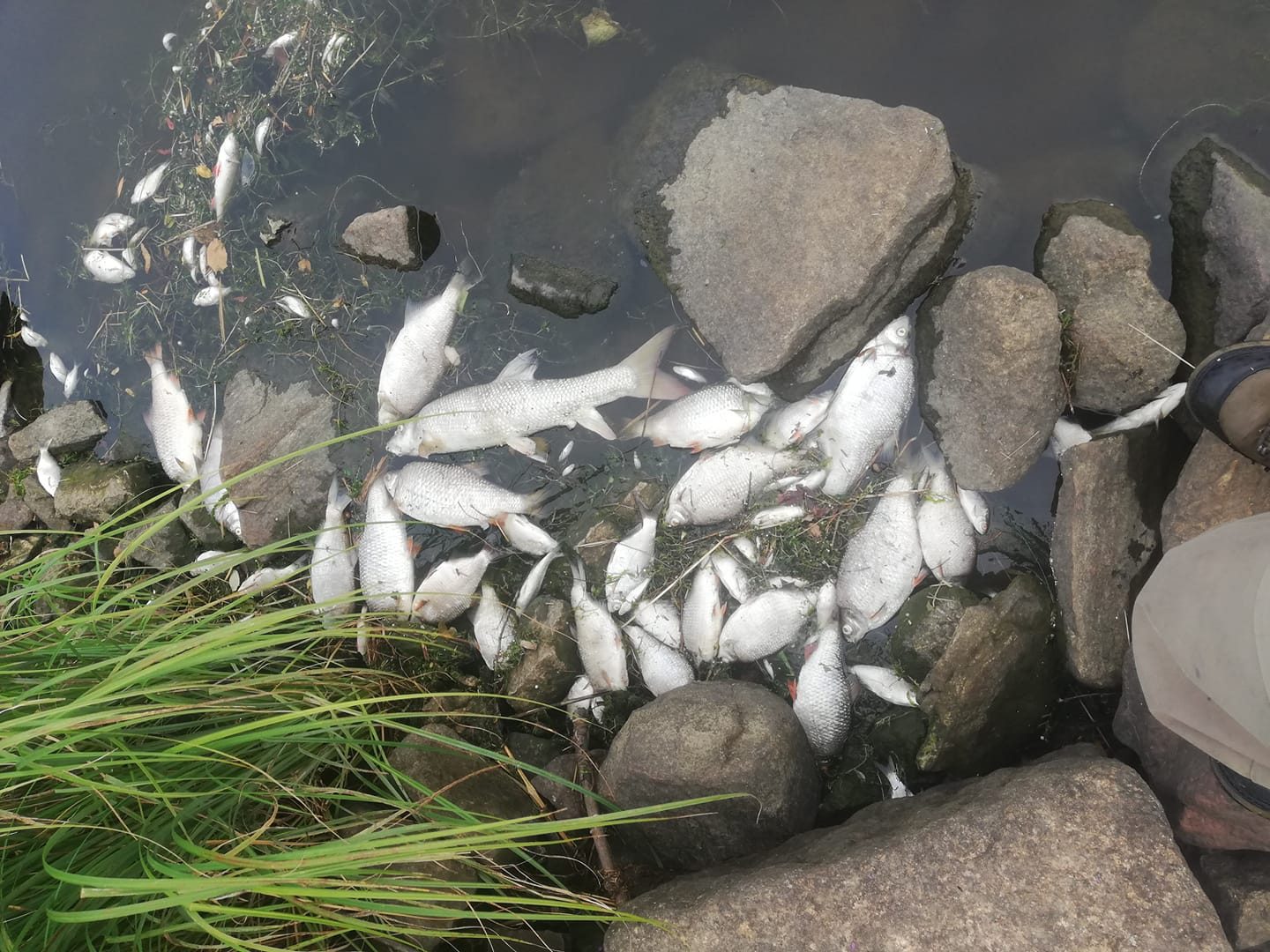
August 11th
The Provincial Environment Inspectorate in Wrocław notifies the District Prosecutor's Office on suspicion of committing a crime against the environment. It also states that samples taken after August 1st do not contain mesitylene. Dead fish are also found in Brandenburg. German media, the authorities of the city of Frankfurt and the provinces of Oder-Spree, Märkisch-Oderland and Uckermark warn residents against entering the Oder River. The Provincial Environment Inspectorate in Zielona Góra appeals not to approach the Oder River. The soldiers are engaged in removing dead fish. Rundfunk Berlin-Brandenburg reports that Brandenburg experts found mercury in samples from the Oder River.
August 12th
Firefighters remove over three tons of dead fish from the area of Krosno Odrzańskie. The first dead fish was found in Szczecin. Maciej Karczyński from the Provincial Environment Inspectorate states that samples from the Lubuskie, West Pomeranian Voivodeship and Lower Silesian Voivodeship do not contain mercury. Residents from these provinces receive alerts not to approach the river. Prime Minister Mateusz Morawiecki dismisses the Chief Inspector of Environmental Protection and the head of State Water Holding Polish Waters. Axel Vogel, Minister of the Environment of Brandenburg, informs that high salinity could have been the reason for the fish mortality. The first barriers to catching dead fish are created.
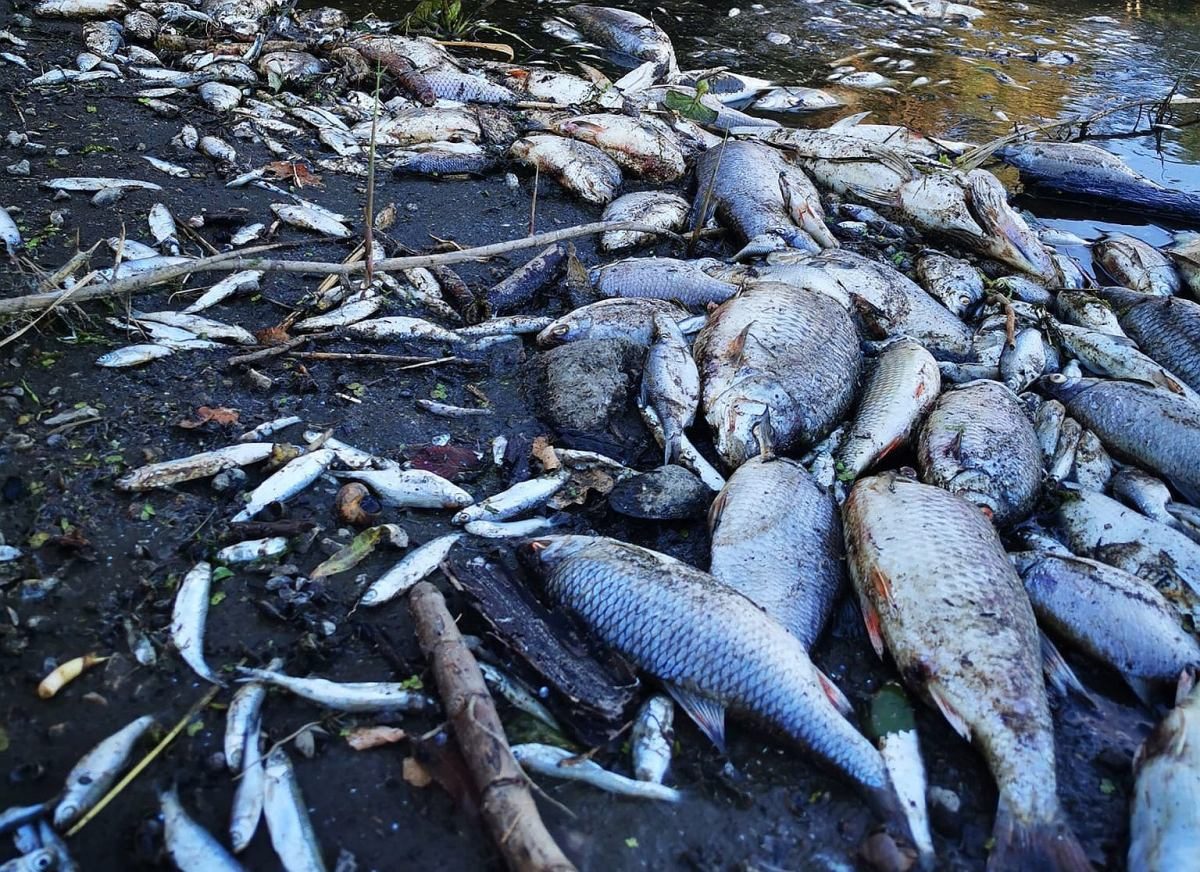
August 13th
The District Prosecutor's Office in Wrocław establishes a special unit investigating the Oder River environmental disaster. The police announce a reward of one million zlotys for the person who will help identify the perpetrator of river contamination. Prime Minister Mateusz Morawiecki comes to visit the Oder River.
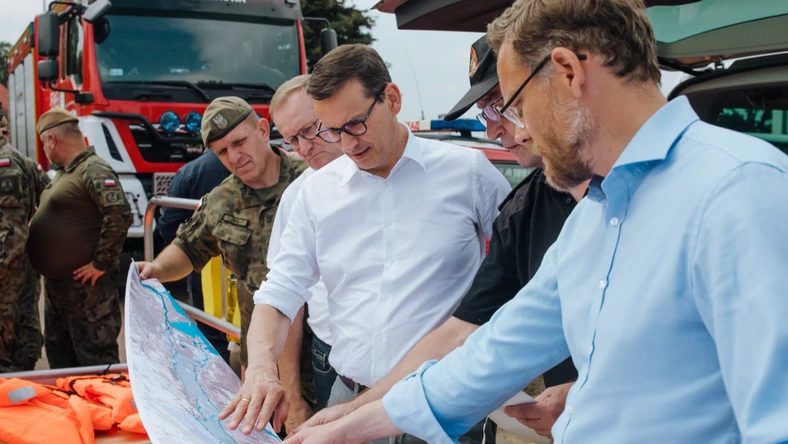
August 14th
The first German-Polish meeting regarding the Oder River disaster takes place in Szczecin. Its goal is to improve and streamline communication. State Water Holding Polish Waters informs that they are analysing companies' activities on the Oder River. Over 200 soldiers, firefighters and other officers are involved in cleaning up the Oder River.
August 15th
State Water Holding Polish Waters icebreakers appear on the river. Their task is to generate waves that will lift fish carcasses from the bottom of the river. Wrocław tests city waters and does not find mercury. Germany set up barriers to catch floating dead fish and share the results of tests detecting mercury in Oder River backwaters. Prime Minister Mateusz Morawiecki announces funds for restocking the river. Entrepreneurs lose money and business out because of Oder River contamination - there are reports of layoffs in fishing companies and the tourism industry. Fish are still dying.
August 16th
The Minister of Climate and Environment, Anna Moskwa, presents three hypotheses for the Oder River environment disaster: toxic substances from illegal discharges, natural conditions, and highly saline industrial waters discharge. The minister announces the creation of a new water monitoring system. Entrepreneurs from the Oder River basin establish the Oder River Bridge Coalition. They announce blockades of bridges until the government explains the causes of the river poisoning. Fishermen light candles over the Oder River.
August 17th
Deputy Minister of Infrastructure Marek Gróbarczyk announces that a special act will be prepared within two months regarding creating a water monitoring system, sewage treatment plants, revitalization of the Oder River and compensation for fishermen. The Mayor of Wrocław, Jacek Sutryk, informs that neither mesitylene nor mercury was found in city waters. According to the Chief Inspectorate of Environmental Protection, the condition of the river is improving, and the oxygen level is decreasing. Still, high salinity remains 5-6 times higher in some places than usual. The Poland Northern Chamber of Commerce calls for a support program for entrepreneurs affected by the Oder River environmental disaster (the right to compensation, exemption from rent or taxes).
August 18th
Polish and German researchers find large amounts of Prymnesium Parvum, the golden algae. These invasive microorganisms produce toxins that can kill fish and other organisms, but only under certain conditions: very salty water and shallow water levels. The Provincial Inspectorate of Environmental Protection informs that the Chief Inspectorate of Environmental Protection was aware of the mass death of fish in three voivodeships on August 3rd. Prime Minister Mateusz Morawiecki learned about the case a week later, and citizens - nine days later.
August 19th
Bans on using the Oder River are extended until August 22nd in the Lubusz Voivodeship and until August 25th in the West Pomeranian Voivodeship. The Minister of Climate and Environment, Anna Moskwa, appears on the Oder River, where golden algae were first detected and promises to investigate why algae have developed in the river. In front of the Lower Silesian Voivodeship Office, people protest against the devastation of the Oder River. Deputy Minister of Agriculture and Rural Development Krzysztof Ciecióra announces compensation for those most affected by the consequences of the Oder River environmental disaster.
August 22th
Satellite photos confirm a massive bloom of golden algae, probably contributing to Oder River fish deaths. Hundreds of dead fish are floating on a section of the Oder River in the centre of Szczecin. There has been no oxygen in the water for several days; it starts to stink, and the smell can be felt on the city boulevards. In turn, the situation in Lower Silesia is improving.
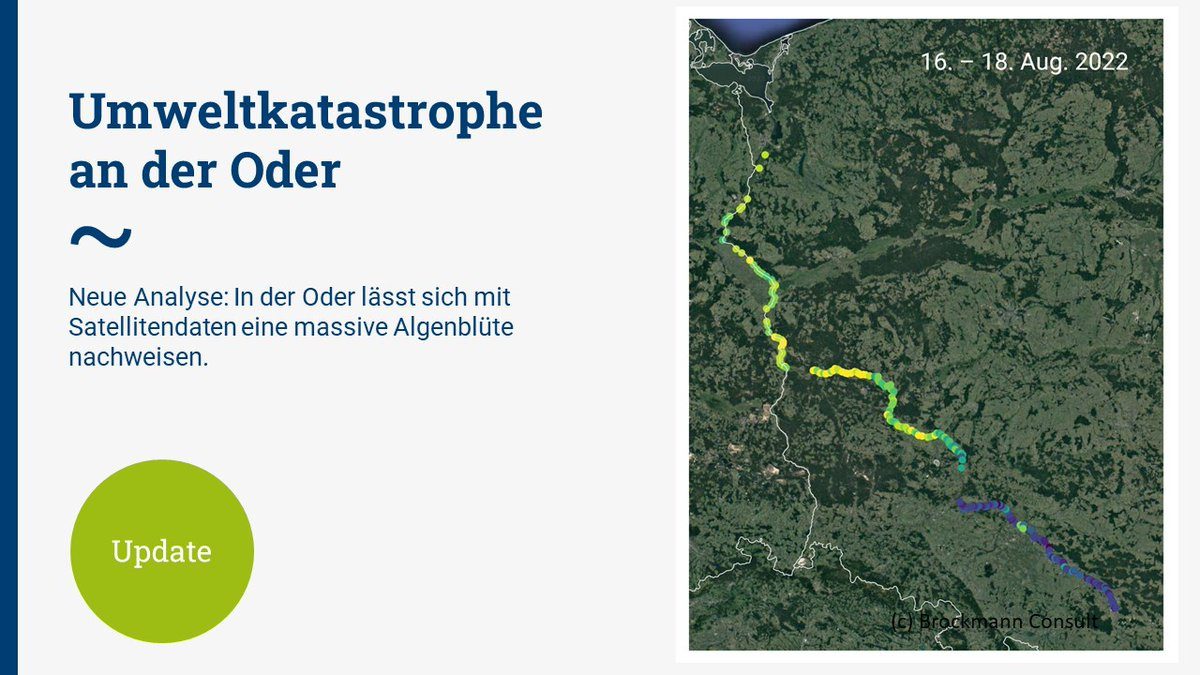
August 31st
Information was revealed that the Lower Silesian Marshal's Office knew about the contaminated Oder River on August 4th, when State Water Holding Polish Waters informed the Marshal in an official announcement. The fishing ban was introduced only a week later, on August 11th.
September 6th
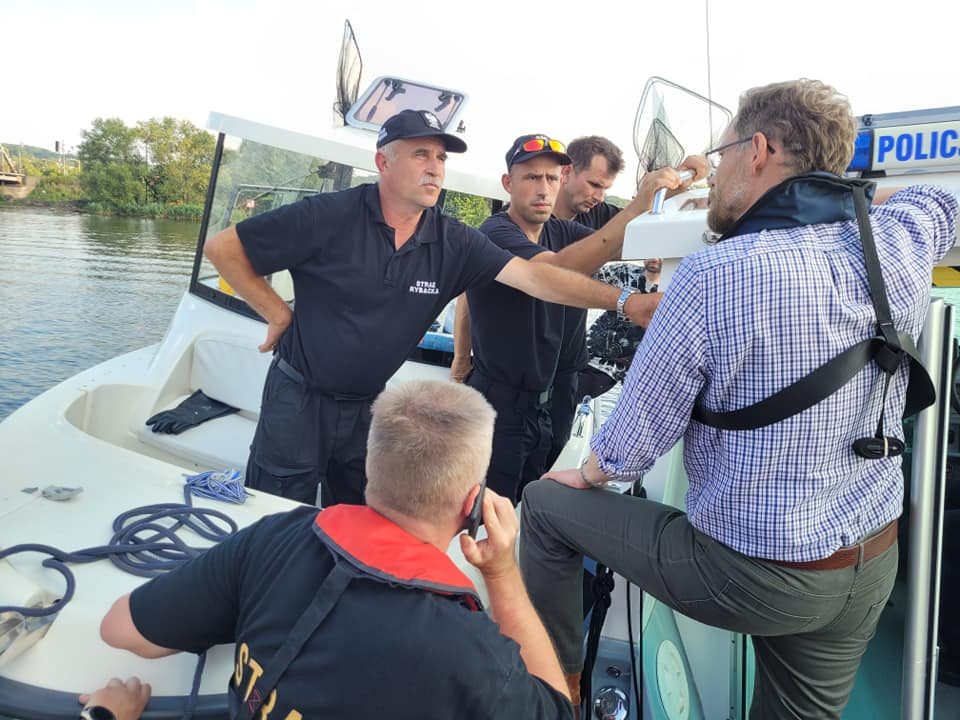
In Szczecin and Western Pomerania, you can now take a kayak trip on the Oder River, and fishermen can go fishing on Lake Dąbie again. On that day, the ban on using the Oder River ended, introduced on August 12th by the West Pomeranian Voivode.
On September 14th, the ban on using the Oder River in the Lower Silesian Voivodeship was lifted, and from September 30th, fishing could be resumed in the Lubuskie Voivodeship.
Cooperation: Zuzanna Olejniczak, Małgorzata Hućko, Grzegorz Kurek, Kalina Stańczak
Design: Arkadiusz Sołdon
Web development: Piotr Kliks
Translation: Grzegorz Kurek
The initiative was created as part of Production Grants for Cross-Border Collaborative Journalism Stories.
The project is co-financed by the Foundation for German-Polish Cooperation journalistic scholarship.
Satellite photos Image © Planet Labs PBC

